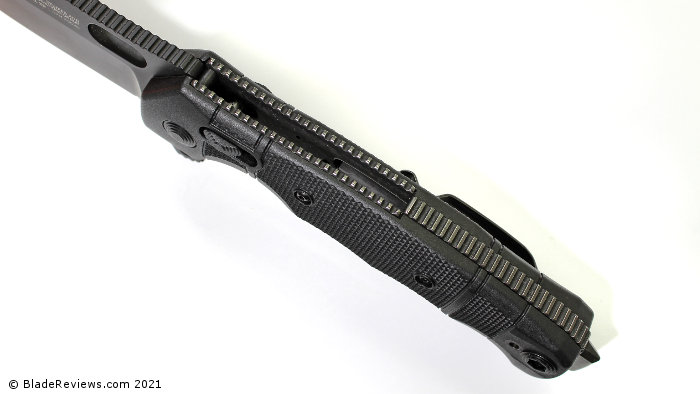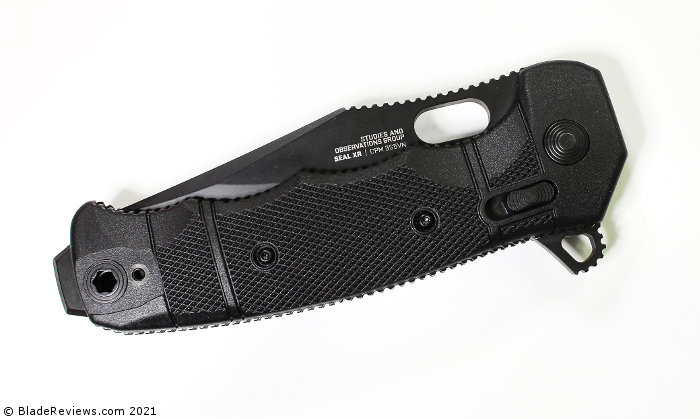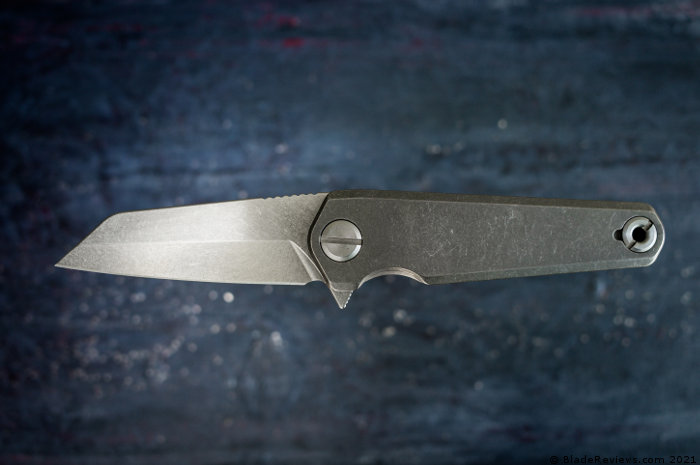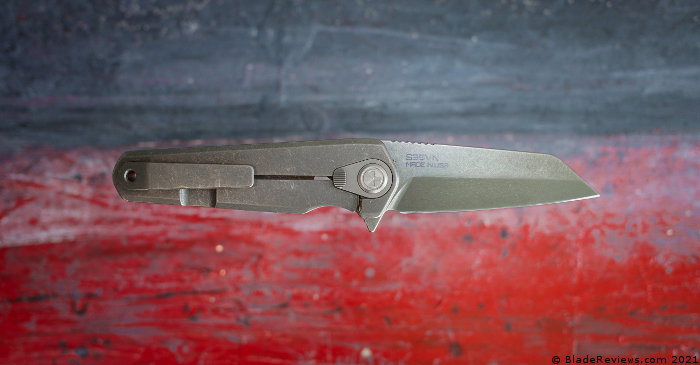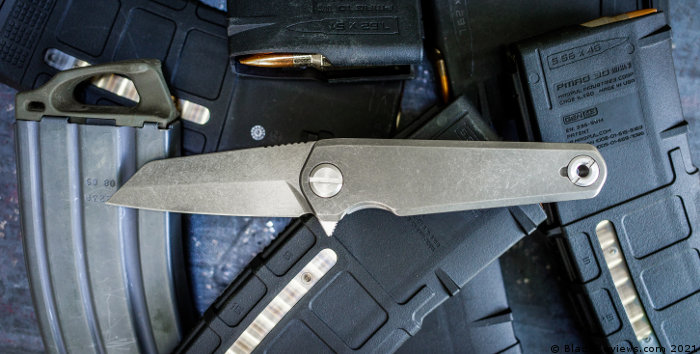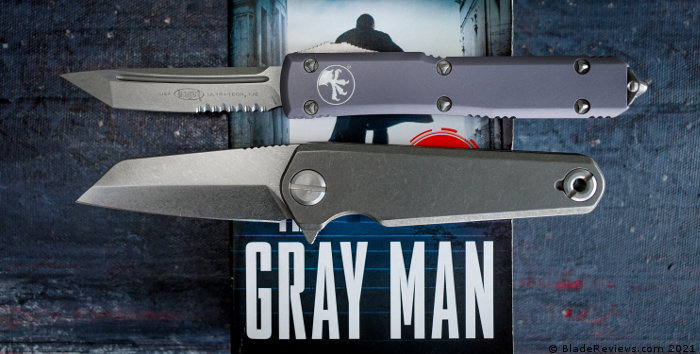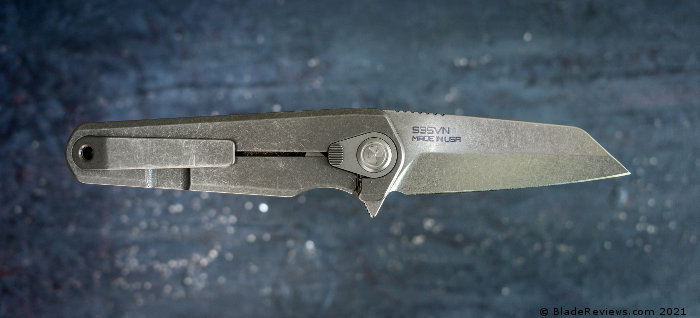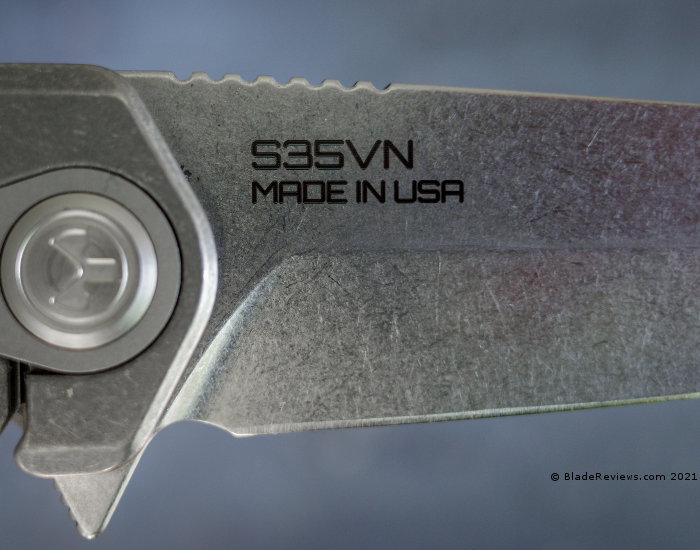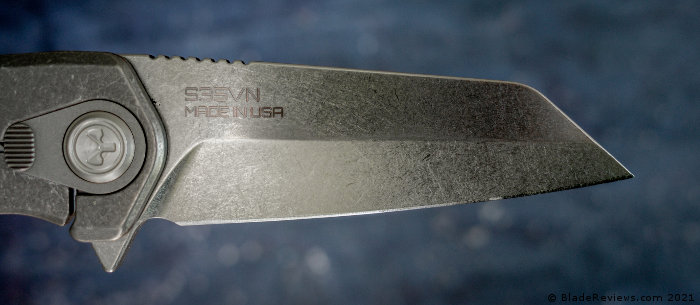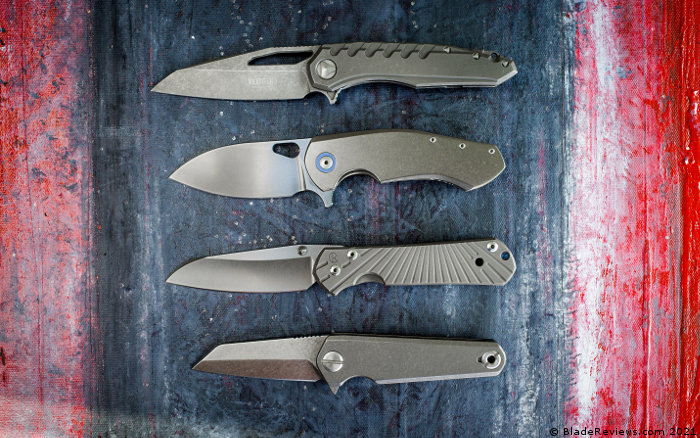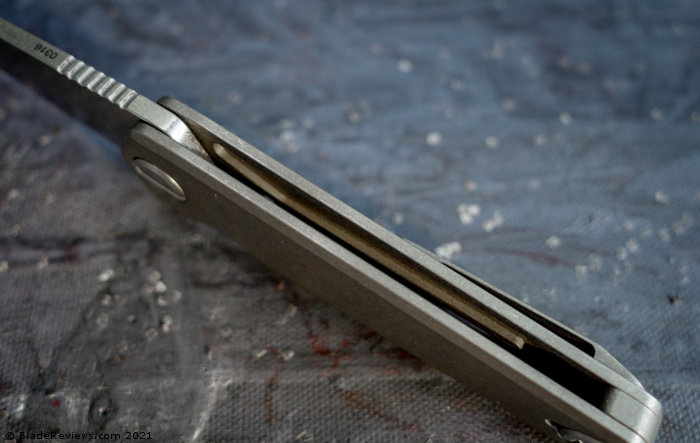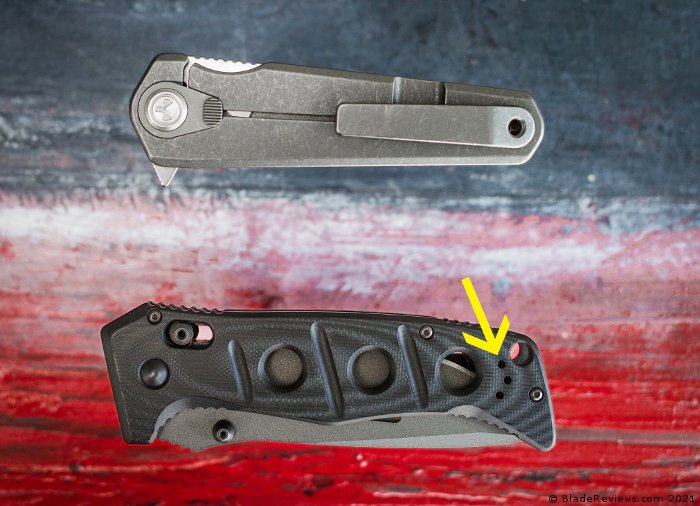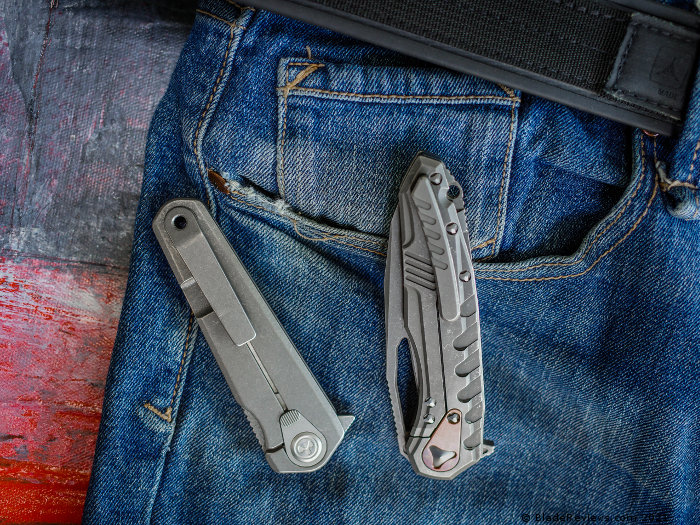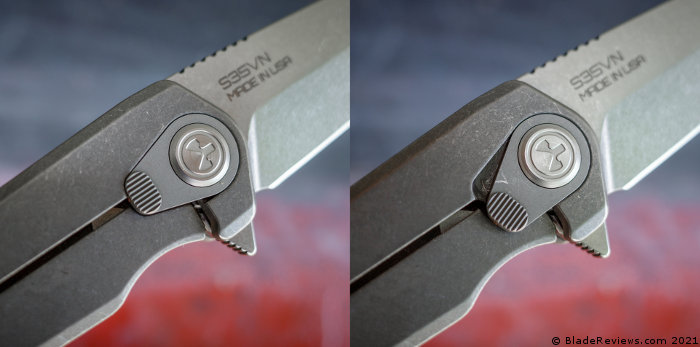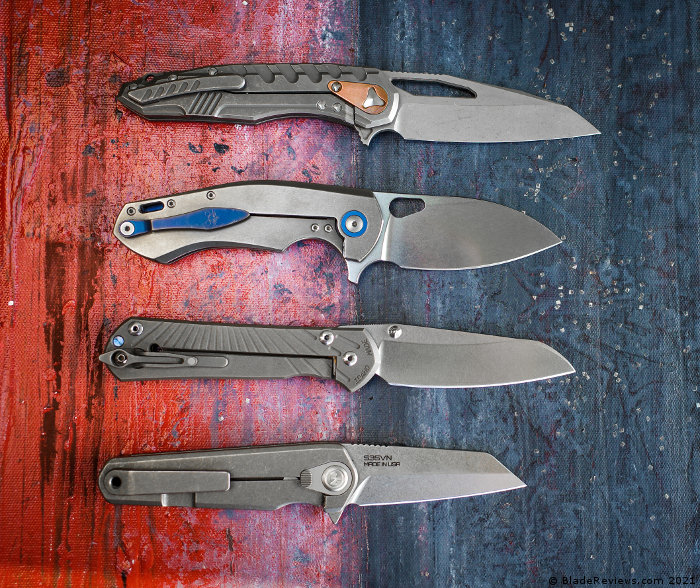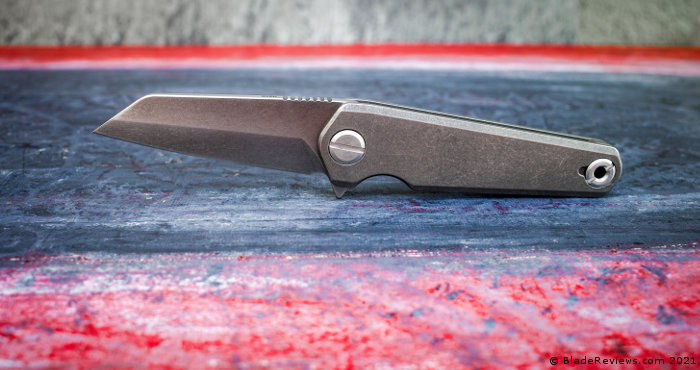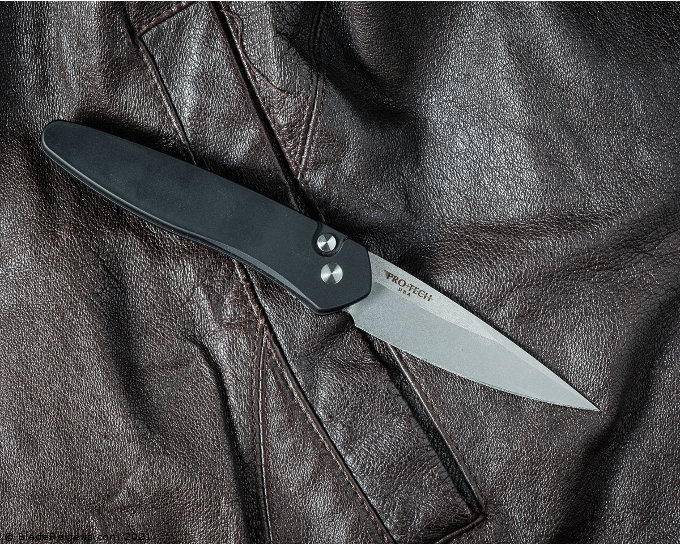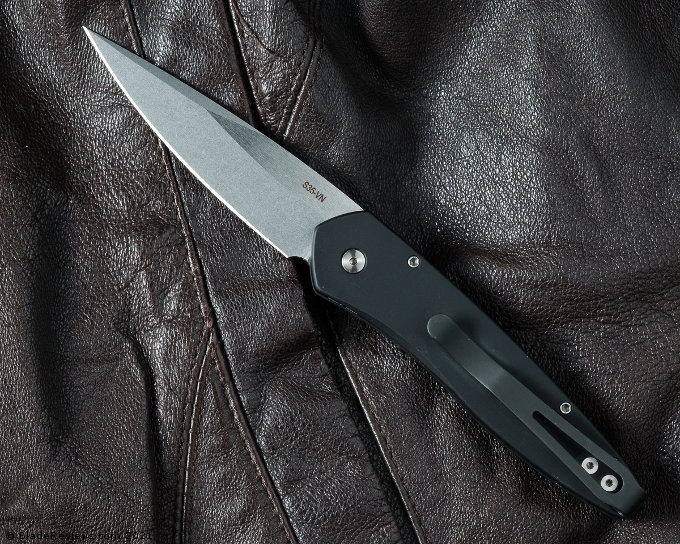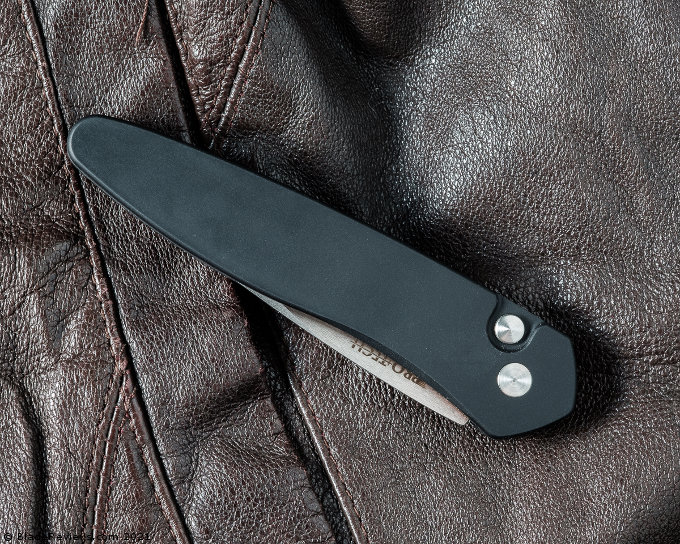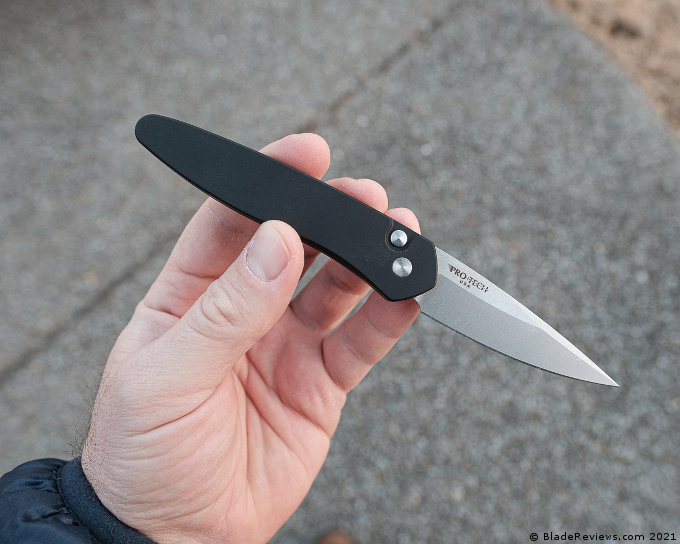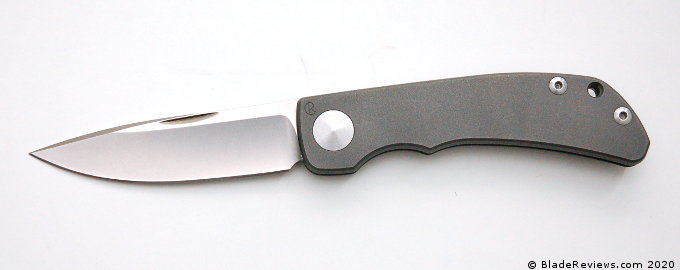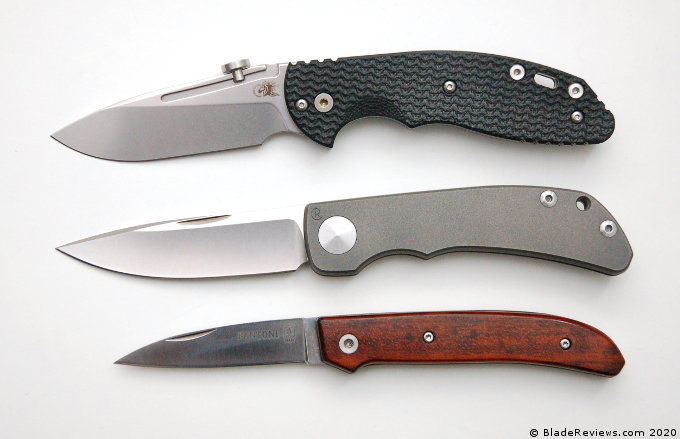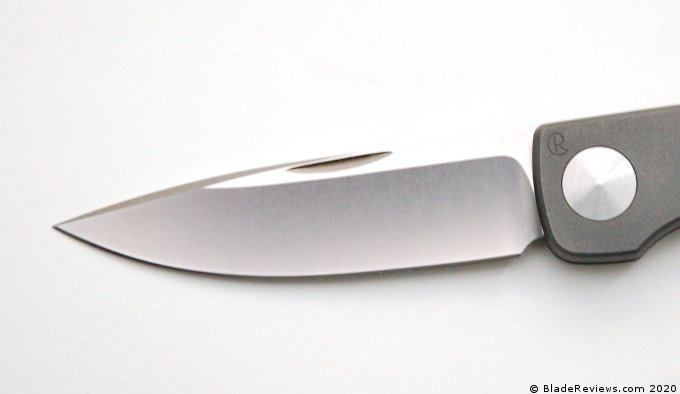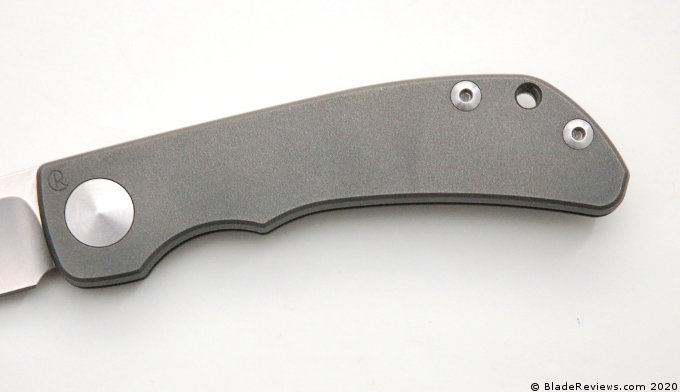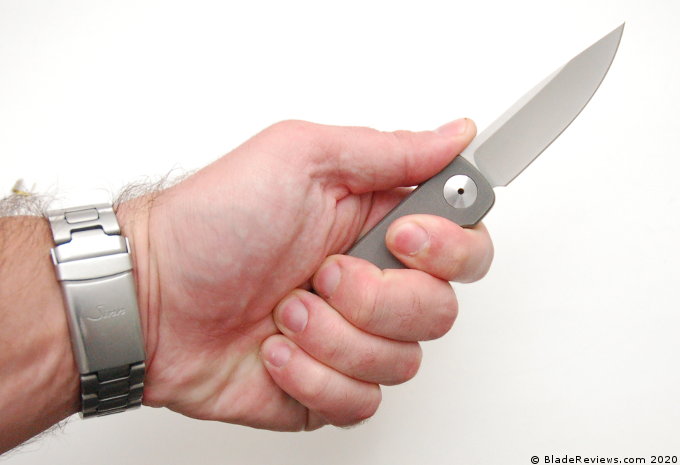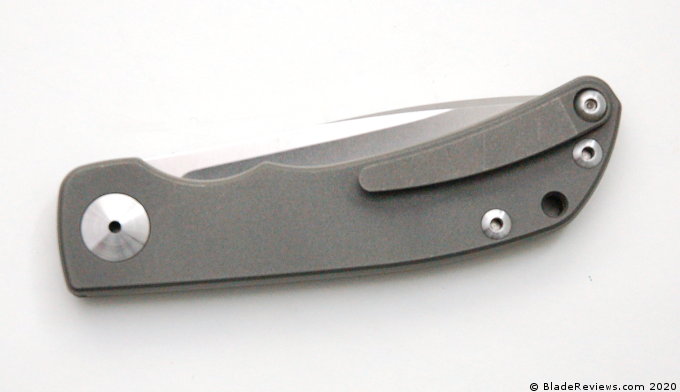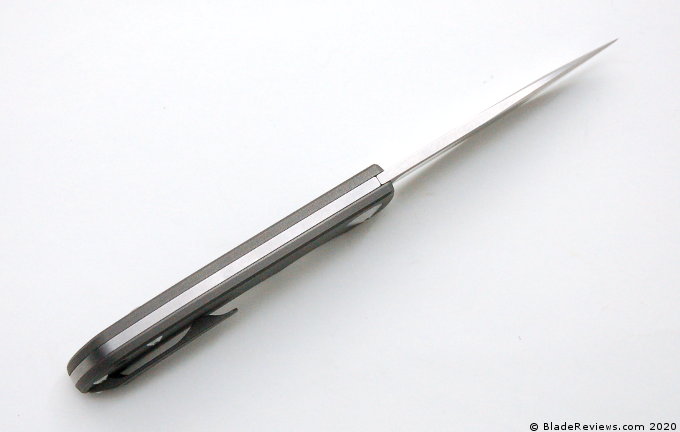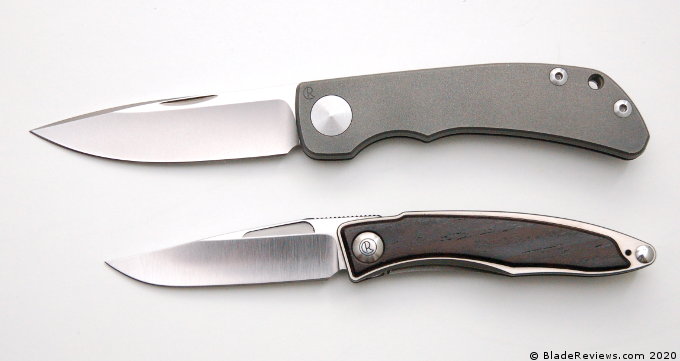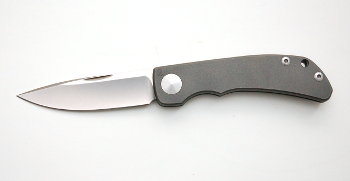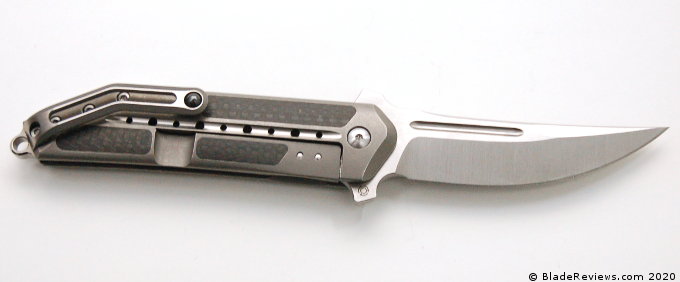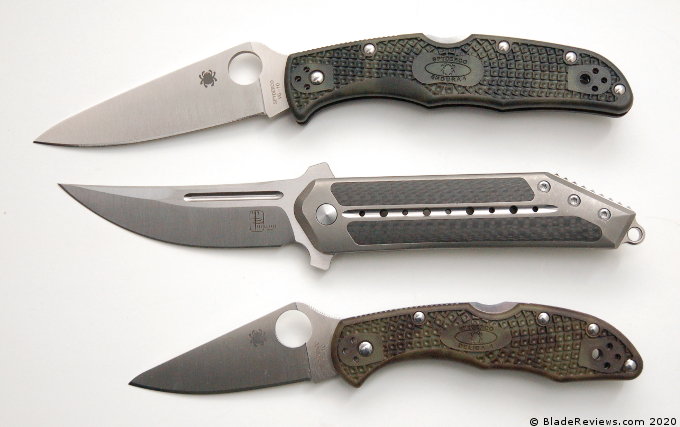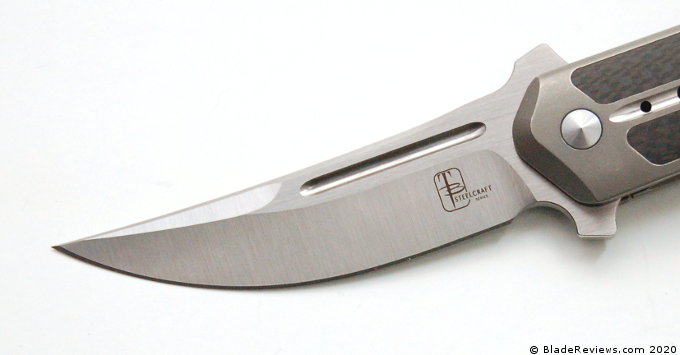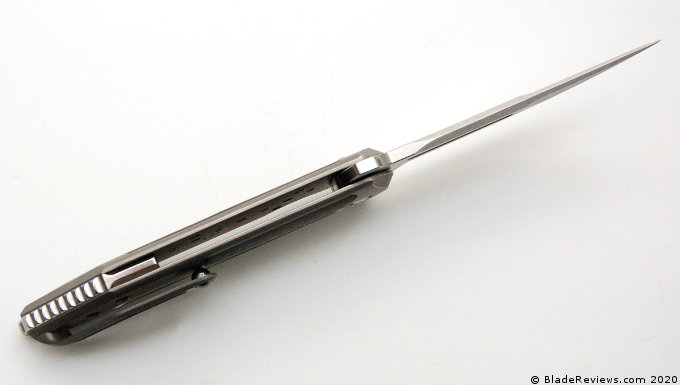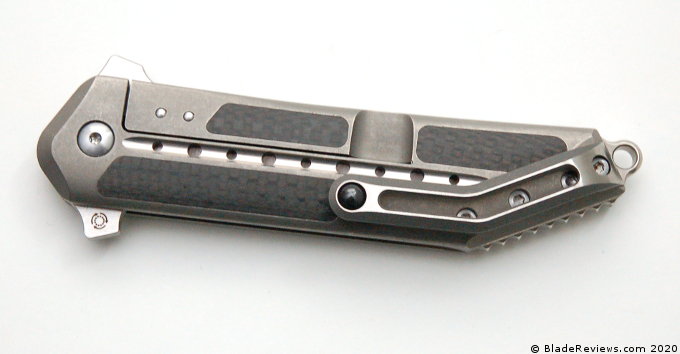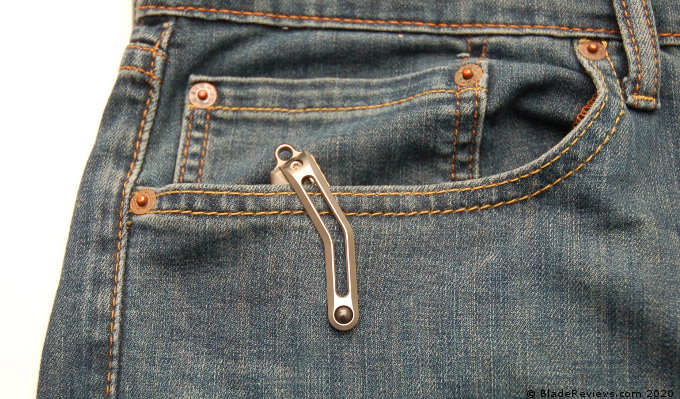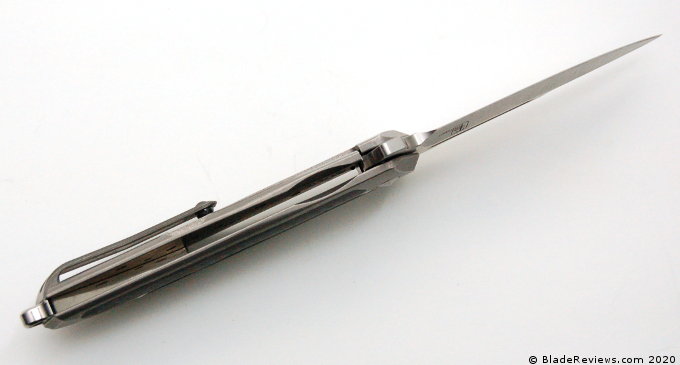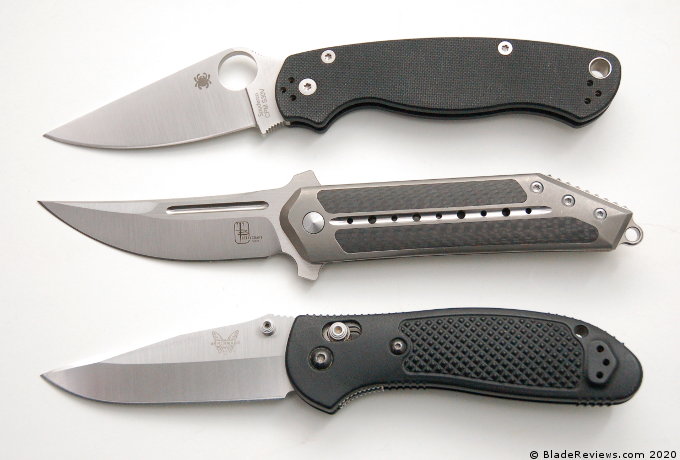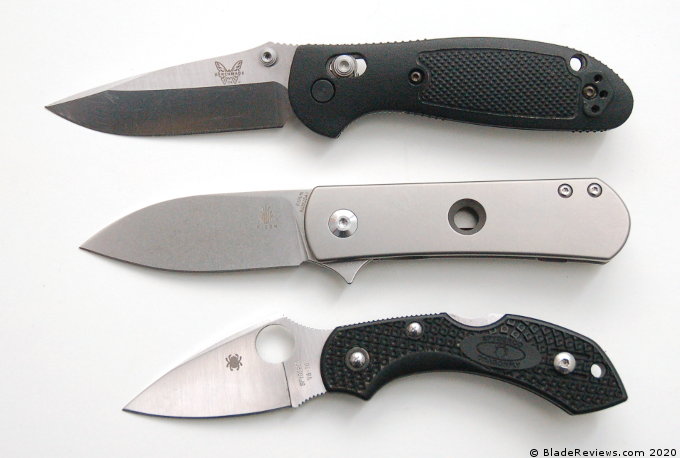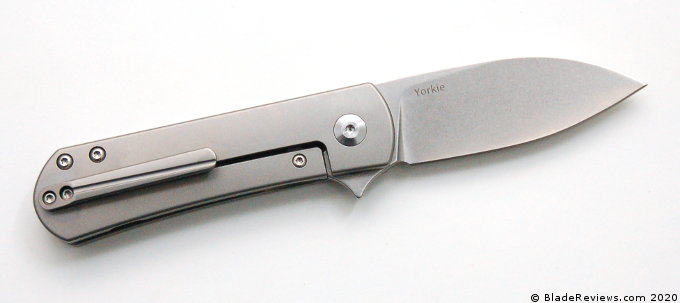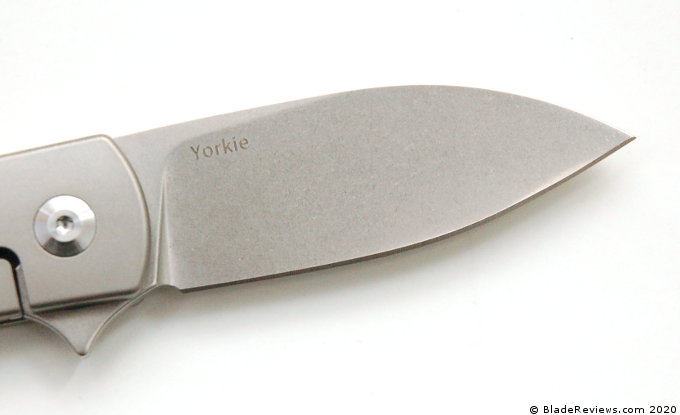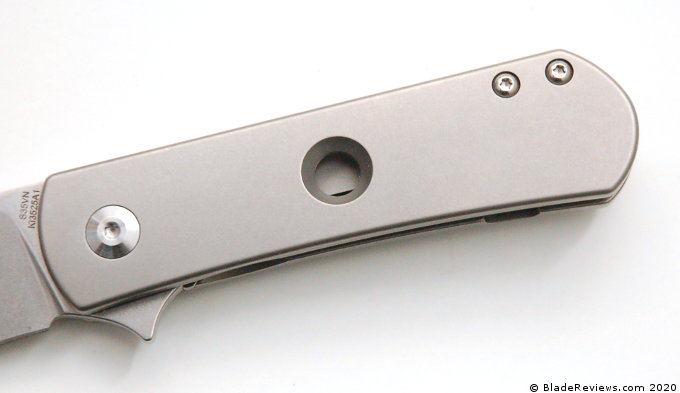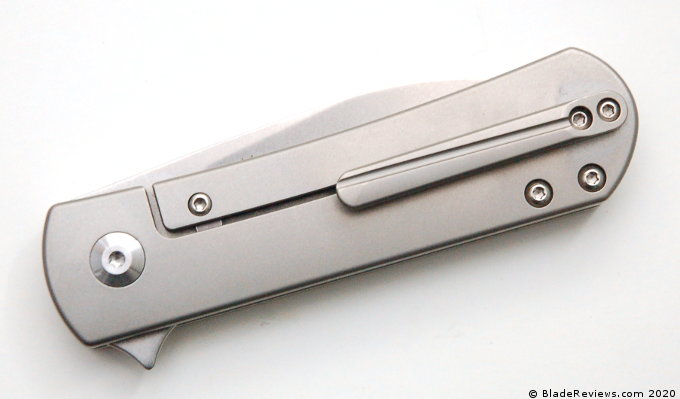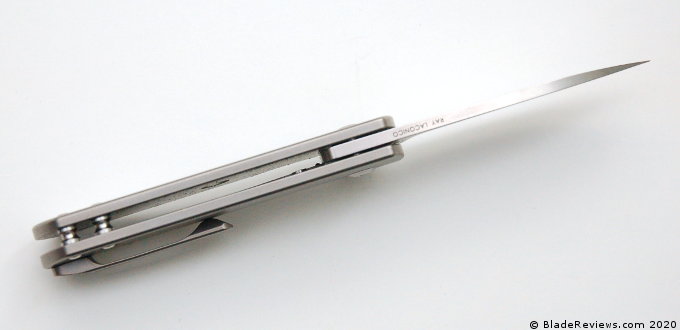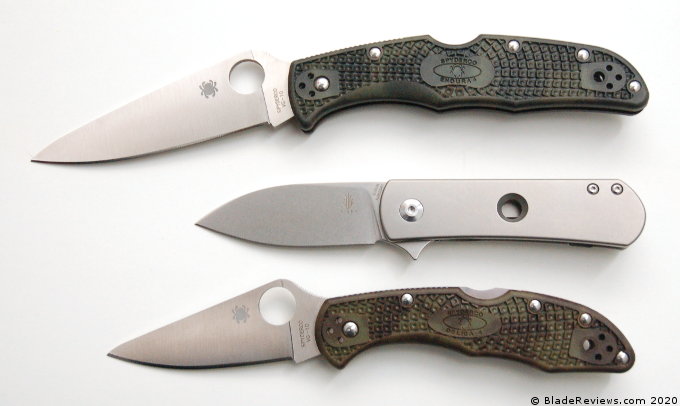For some, getting right up to the point of “too much” is exactly the point. I’d read once that Chevrolet didn’t see any need to put a stronger engine in the Corvette in the sixth and seventh generations because without a mid-engine chassis, adding more power would just spin the tires. Sensible enough. Meanwhile, Dodge threw a 1200 horsepower engine into the “Demon” variation of the Challenger, because you know, MORE. Muscle car guys threw their wallets at it.

Buy the SOG SEAL XR at BladeHQ
In the knife world, the efforts directed towards making a robust and bulletproof folder typically result in a design that ends up overly big and heavy. At a certain point, you cross a line where it would have been easier and more cost-efficient if the consumer found a good fixed blade and called it a day.
Enter the SOG Seal XR. Primarily designed as a law enforcement / military grade tool (the name is indeed a clue), the knife is additionally billed as being ready and willing to cut through any problem regular guys like us have to throw at it.
Now, the sensible part of my brain knows that there’s no shortage of sub-$50 machetes from name brands like Kershaw, Ontario, and Cold Steel that are up to the task of being batoned through a piece of firewood. What’s the use, then, of subjecting a folding knife retailing at $190 to that same degree of use and abuse?
The damndest thing happened on my way to trying to answer that question. Once I unboxed the knife and started using it, the Seal XR put “sensible” into a headlock from which it never emerged.
General Dimensions and Blade Details
As you might already expect, the Seal XR is a big boy. My specimen weighs in at 7.98oz on my digital scale. Closed, the knife is 5.25” top to bottom, about three quarters of an inch across the widest point of its body (not counting the clip), an inch and a quarter at its widest point when folded from back to front, and a hair over 9” in overall length when deployed. Here it is between our usual suspects, the Spyderco PM2 and the Ontario Rat II.
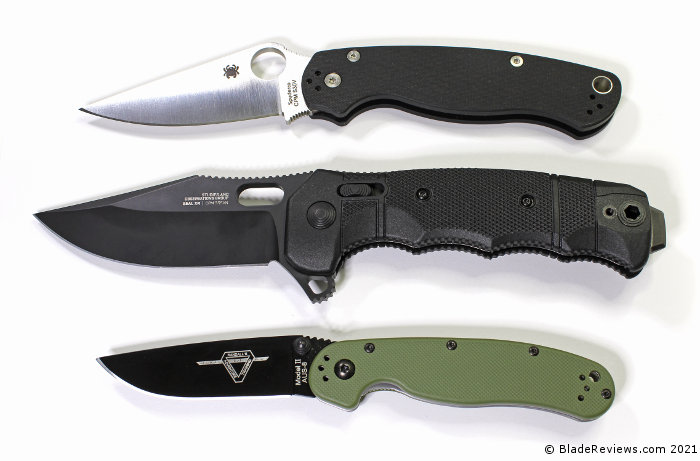
Note that these specs may preclude pocket carry for some. For real-world reference, my iPhone is about 4.7ounces in weight (with case). The Seal XR’s size and density is certainly enough to make it pants-saggingly conspicuous if worn all day in the front pocket of your shorts. Then again, and especially when it comes to overbuilt tools, there’s no such thing as a free lunch.
Personally, I’ve felt the Seal XR to be less burdensome when carried in a sturdier jacket pocket. It’s going to feel better clipped to thicker, utility-grade denim as opposed to skinny jeans. Those who actually might need to rely on the Seal XR as part of any kind of military or law enforcement use might have more kit to play with, from tactical vests to Batman-style utility belts, which might allow a more secure and confident carry. My point is that not all wardrobe is compatible if you want to EDC this thing.
The blade shape of the Seal XR is excellent: I always like the look and performance of clip points, and there’s a lot of belly that allows the knife to cut aggressively just based on geometry. By my measurements, the Seal XR provides about 3.5” of cutting edge and 4” of blade length. The stock on the blade measures a respectably beefy 0.19” across. Put all of these dimensions together, in combination with the always-great S35VN steel, and you end up with a big knife that can poke and cut with the best of them.

A word on this: if you’ve never used a big knife for normal household tasks, you’re in for a treat. The Seal XR positively decimates cardboard boxes, and it was a joy to use in breaking down a six-foot long branch that I woke up to find blocking my driveway. The Seal XR also pierced very well through some eighth-inch thick plastic to make several impromptu drainage holes in a makeshift planter. The blade remains paper-cutting sharp.
This is pedestrian stuff for a knife designed to withstand the rigors of fighting ISIS operatives or being run over by a Humvee, but I was surprised by how a hard duty knife made short work of light duty tasks. It certainly never felt like overkill.
Handle, Ergonomics, and Pocket Clip
The word of the day when it comes to the Seal XR is “jimping.” While the FRN handles are nicely grippy on their own, the finger grooves, blade spine, backspacer, liners, and flipper tap are all aggressively machined in order to really let the Seal XR lock into a gloved hand. With a solid grip, this thing is only getting away from you if you lose a couple fingers.
It seems excessive at a glance, but let me assure you: you can definitely come away from a bare-handed work session without feeling like you’ve been juggling a few cheese graters. The finger grooves are comfortably spaced, and the knife balances nicely just behind the XR lock, so despite the weight it’s never unwieldy.
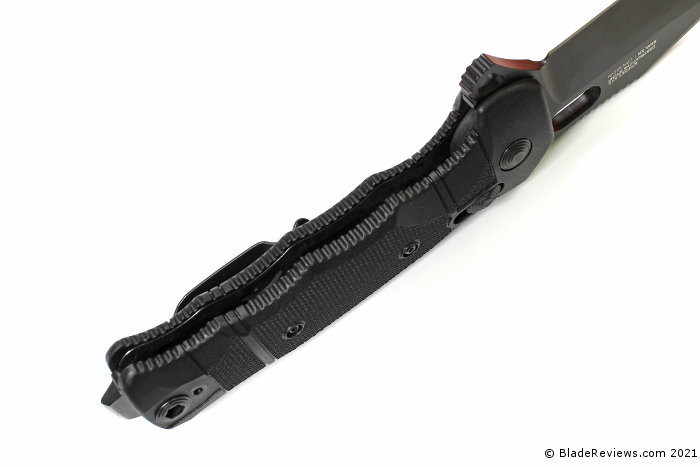
As for the pocket clip: I don’t love it. Normally my biggest beef with knife clips is that they produce hot spots during use. Not so here: in this respect, the SOG clip is actually workable. It’s also aesthetically very nice, and the company’s logo is understated compared to other models like the Terminus. In the past, SOG has gotten a deserved amount of flack for pocket clips that seem to literally shout the branding at you, and for that reason I appreciate the no-BS approach here.
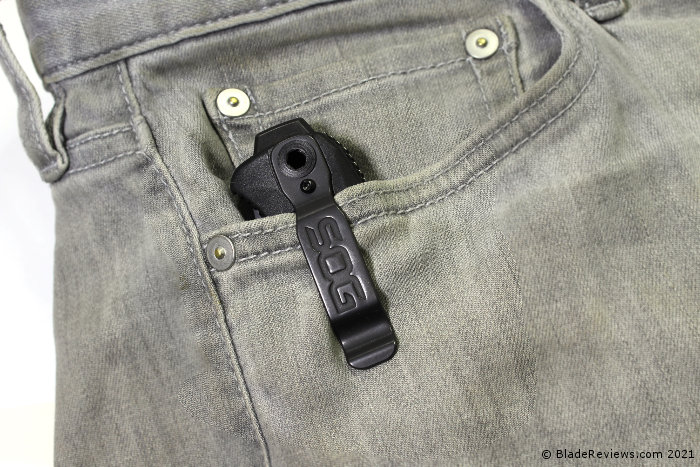
What irks me about it is that its size ends up blocking off the part of the knife where my middle and ring fingers want to land while operating the XR lock, as might be a little more evident below.
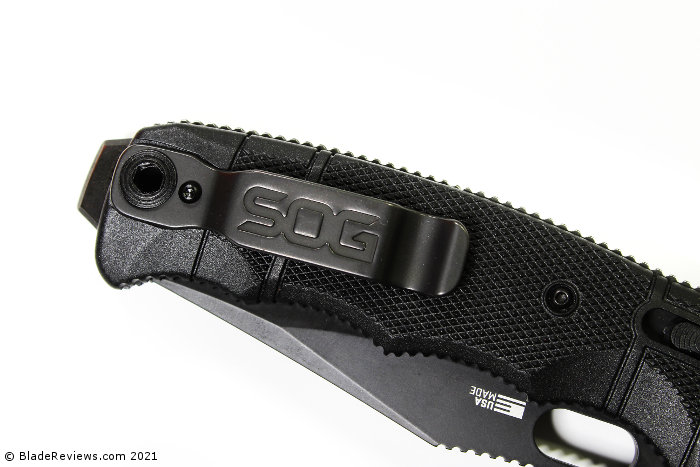
If I try to secure those digits on the clip, it’s slippery thanks to the mostly smooth steel. But secured just forward of the clip, it puts the meat of my fingertips a little too close to the blade’s closing path for comfort, and especially so given the momentum it has when it slams home. (More on this to come.) Without the clip, I feel a lot more confident and comfortable working the action.
Deployment and Lockup
No bones about it: the XR lock is a treat. I quickly found this to be my preferred deployment method. The beefy blade practically carries itself through the arc of travel with the laziest of wrist flicks, as the inner workings of the XR lock actually begin to push the blade out and away when the button is actuated, as seen below.
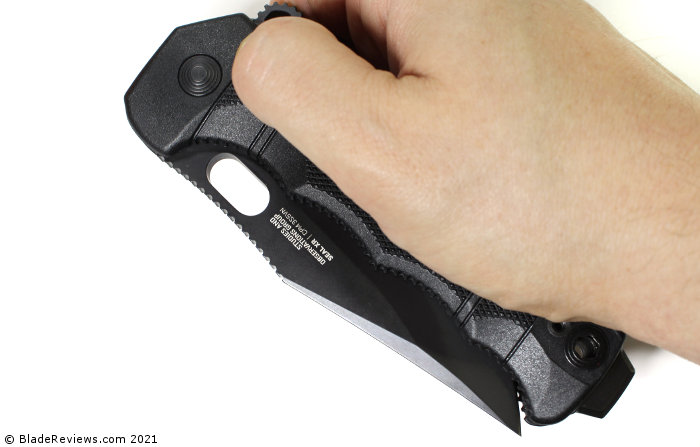
You can certainly use the eminently functional flipper tab, though it requires just a little more effort than the average pocketknife to kick out the blade. The “thumb hole,” if you ask me, is purely decorative and not a serious deployment option.
Lockup is as rock solid as I could ask for. Expect excellent centering open and closed, and no detectable play in any direction upon deployment. SOG has been getting deservedly good press as a result of its take on Benchmade’s AXIS lock. The verdict is that the XR lock is durable and reliable, and smooth enough to make every one of SOG’s manual folders fidget friendly. Unlike some of my Benchmades, however, there was no appreciable early stiffness or break-in period necessary. Right out of the box, I was flicking the blade open and closed with ease.

As for flicking the blade closed—it’s a little thrilling and a little scary. Disengage the XR lock and the blade slams home like a runaway vault door with an audible clack of metal against metal. (More reason I want my fingers firmly planted on the handle.)
SOG Seal XR Review – Final Thoughts
The Seal XR is proof positive that SOG has listened to the feedback provided by knife aficionados and is genuinely competing to stand neck and neck with stalwarts like Benchmade and Spyderco. The build is quality through and through, and the company has seemingly done the impossible in making a nigh-indestructible “serious business” tactical knife utterly fun and fidget friendly.
But with an MSRP of about $190, is an eight-ounce slab of S35VN built for the horrors of war something you need? For most, the answer is no. That said, my knife drawer would be a lot less crowded if I’d limited myself only to buying what I needed rather than what I found cool or interesting. Although the Seal XR was a little much for my personal EDC considerations, those who want a tough-as-nails folder like this will likely find a way to make the size and weight work. Big knife guys, you already know who you are.
At the end of the day, the Seal XR gets a big thumbs up. Sure, you can probably get through your household or workshop tasks with a smaller, lighter blade. But if you’ve never used a knife like this, you might be surprised by how it soldiers through whatever material you need to cut in less time and with less effort than you’re used to.

SOG SEAL XR
From: BladeHQ
Editor: I recommend purchasing the SOG SEAL XR at BladeHQ. They aren’t currently available on Amazon.
